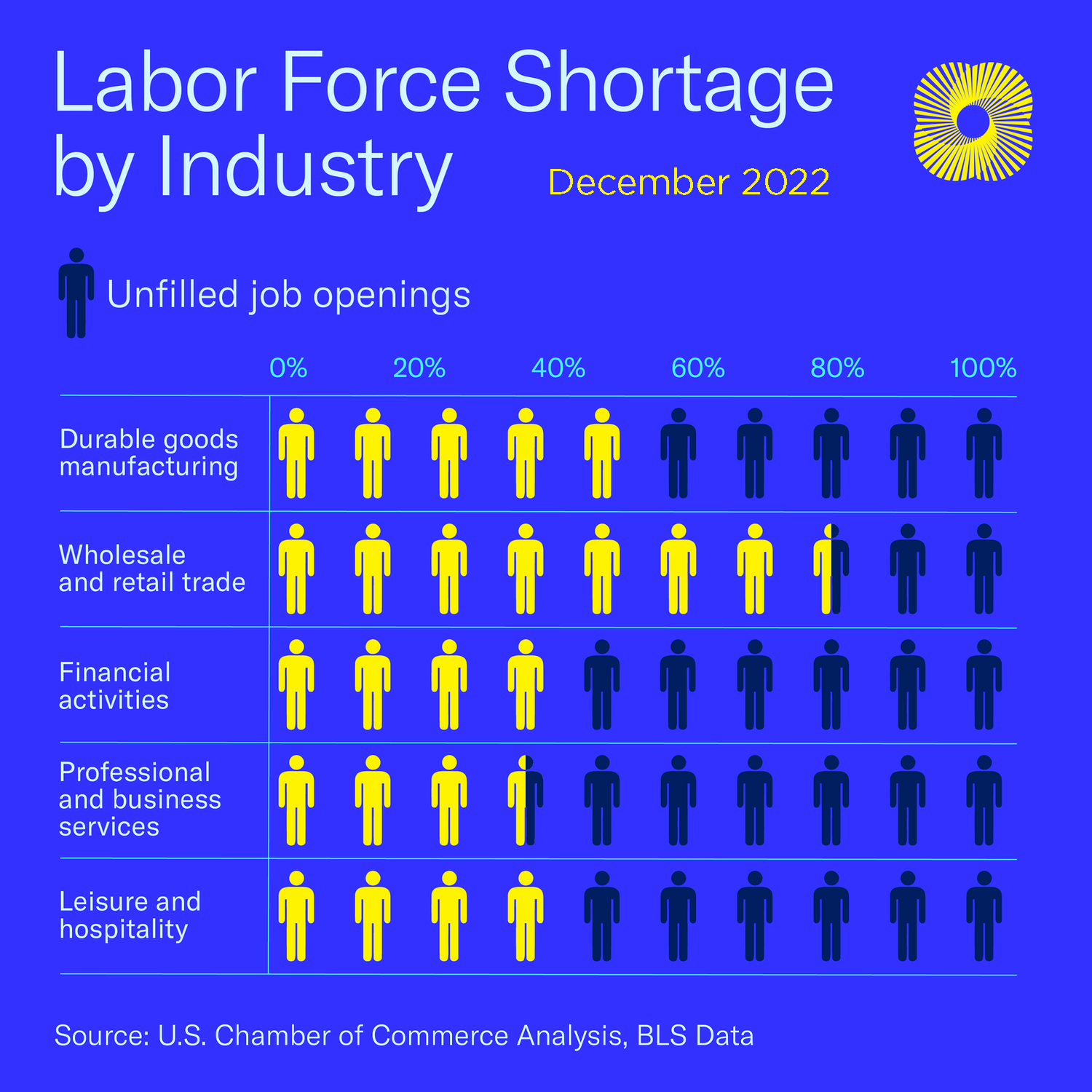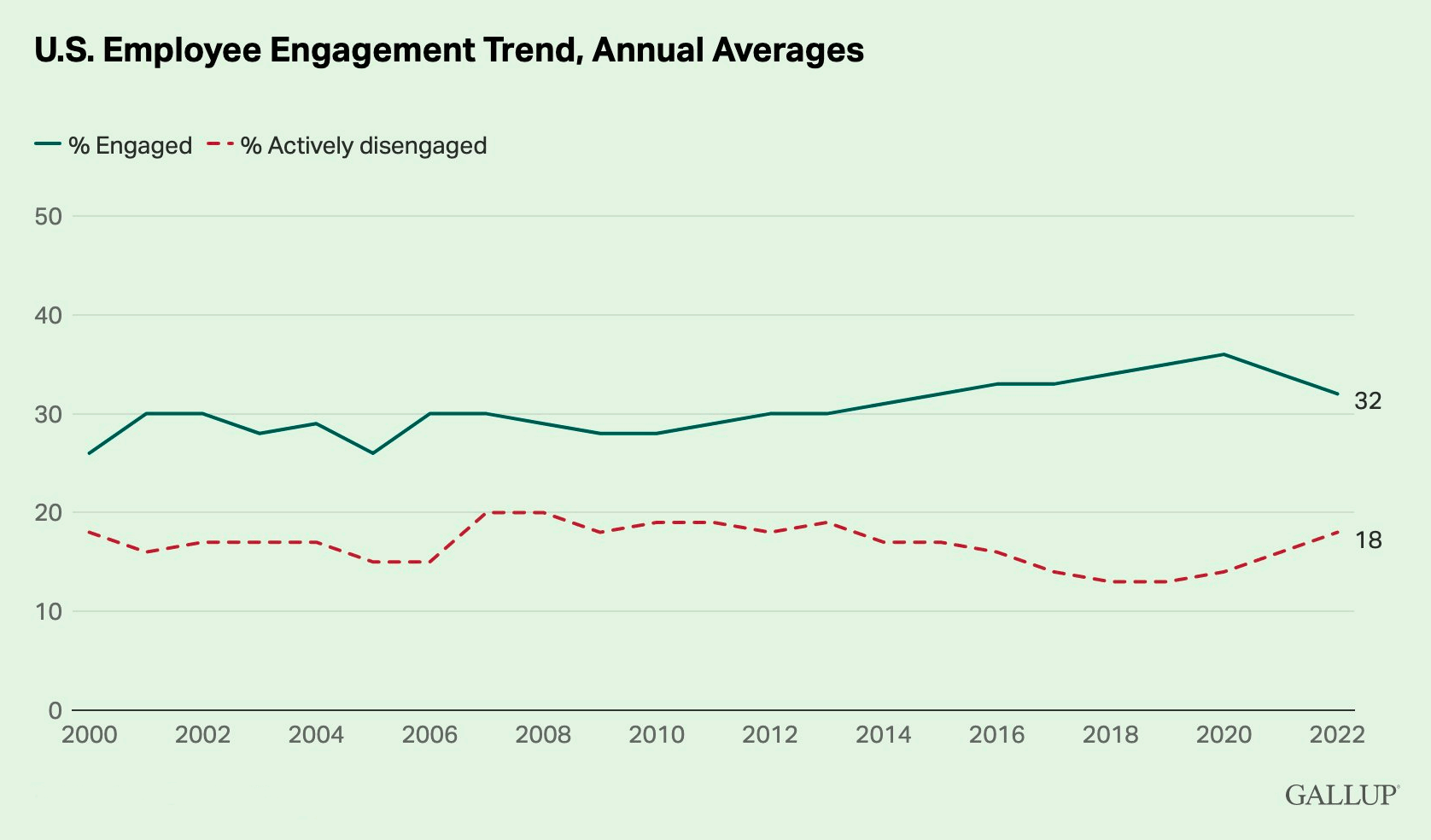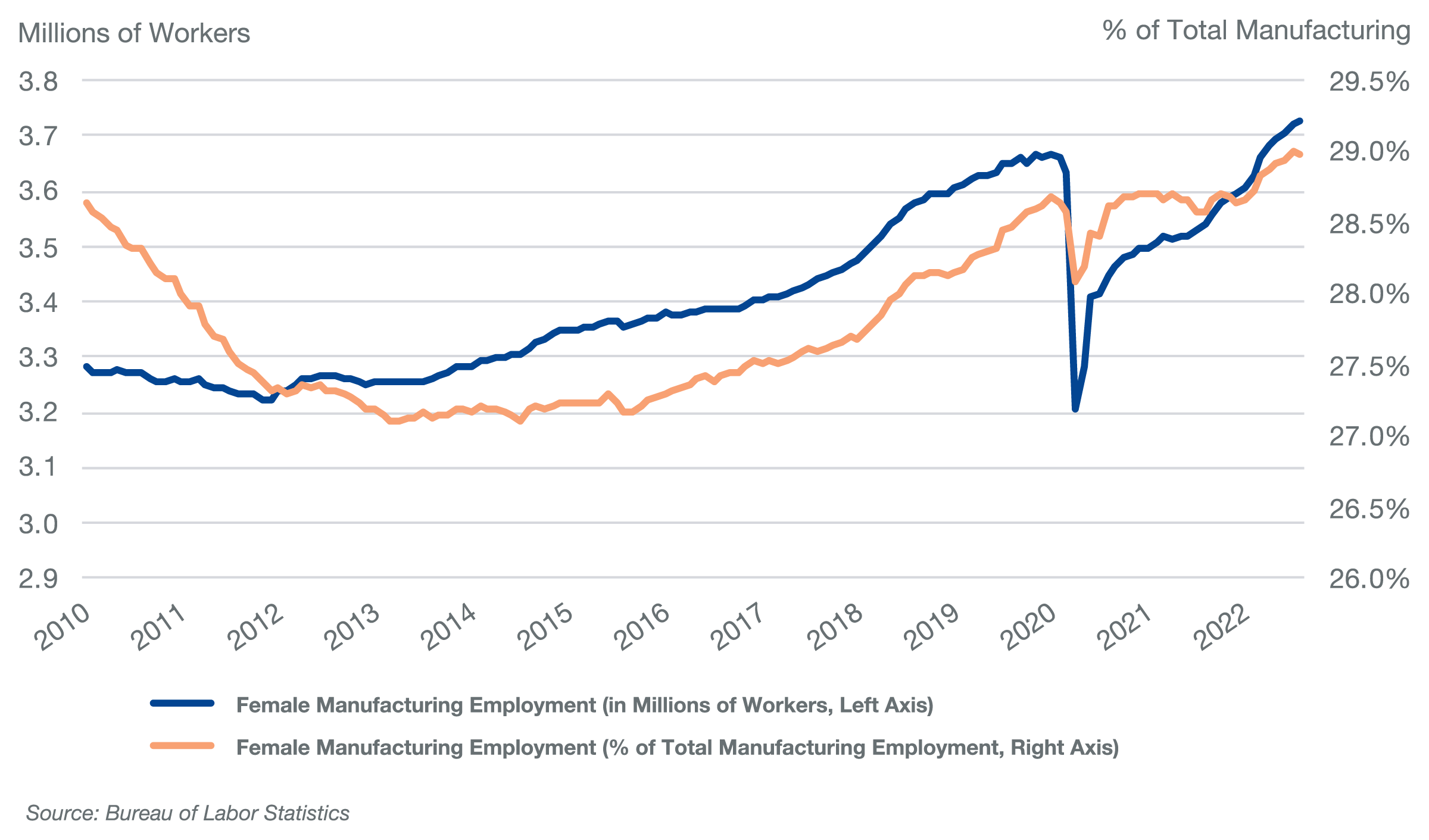
Last updated on June 5th, 2023
Survey after survey is showing the same thing – businesses need to get back to basics to create the type of work environment that attracts and keeps employees. With almost 50% of employees looking for a new job in the first half of 2023 (Solutions, 2022), creating a workplace that attracts and retains talent has shifted from an HR problem to a C-suite strategic imperative, and time is of the essence.
The current labor situation is different from any in our country’s history in one major way: there are simply more jobs than people to fill them. A recent article on Bloomberg.com summed up the result, stating, “The time has arrived when America’s demographics are conspiring against its economic ambitions.” (Donnan, 2023) This sentiment holds true, according to a 2022 Manufacturing Institute/Deloitte study reporting almost half of manufacturing executives had turned down business opportunities due to the lack of workers (Institute, 2022). The situation is not going to get better any time soon, with the Congressional Budget Office predicting the American workforce will grow by less than .2% a year through 2031 (Office, 2023).
Many employers have set their sights on finding new, leading-edge solutions to address the crisis. No doubt innovation has its place, but so does creating a mutually beneficial, healthy employer-employee relationship and workplace based on fundamentals.
In January, Gallup reported that employee engagement is at its lowest since 2015, with the biggest declines in clarity of expectations; connection to the mission or purpose of the company; opportunities to learn and grow; opportunities to do what employees do best; and feeling cared about at work. The path to drive improvements isn’t new (ask employees for feedback; make changes based on feedback; clarify expectations; share and celebrate positive results); but, Gallup does have decades of proof that it works (Harter, 2023).
Another survey’s results issued in January, this time by the Conference Board, reinforce the crucial role fundamentals play in creating a workplace that works for today’s employee. The 2023 C-Suite Outlook Survey identified four strategies to create a better workplace: prioritize employee wellness to promote physical, mental, and financial health, as well as stress management; embrace flexible work arrangements; invest in all employees’ professional development; and strengthen succession plans. (Board, 2023)
There’s more. Executive Networks’ “The 2023 Future of Working and Learning Report” points to upskilling as the most critical aspect of organizational success this year. 45% of knowledge workers and 30% of front-line workers said people are leaving their company due to insufficient career advancement or development opportunities. About 83% of HR leaders and 79% of business leaders agree skills-based training should be used as a retention tool. (Networks, 2023)
Together, these survey findings and reports tell a powerful story: businesses need to get back to basics and walk the talk when it comes to creating the type of work environment that attracts, retains, and grows skilled talent. Still, this appears easier said than done.
The Manufacturing Institute with support from Colonial Life issued a report in November called: “The Manufacturing Experience: Closing the Gender Gap.” It says: “As it stands, women make up more than 29% of the manufacturing workforce. By raising the percentage of women in the manufacturing sector to 35% of total employment in the sector, there could be 800,000 more female manufacturing employees. This would be enough to fill almost every open job in the manufacturing sector today.” (Life, 2022)
It sounds easy enough until you look at decades-old issues like pay equity. The Pew Research Center issued a report in March stating, “The gender pay gap in the U.S. persists, and in fact, has barely budged during the past two decades.” In 2002 women earned 80 cents on the dollar as compared to men. Twenty years later, the pay equity gap improved by just 2 cents, with women earning 82 cents for every dollar earned by men in 2022. (Kochhar, 2023)
Another disconnect relates to diversity, equity, inclusion and belonging (DEIB) initiatives. A survey commissioned by Indeed.com earlier this year found 49% of Black workers are considering or actively looking for another job due to unfair compensation, lack of career advancement, and lack of managerial support. Survey respondents indicate the actions companies take for DEIB (i.e., diverse hiring practices, diversity committees and awareness events) simply do not align with what Black employees want (i.e., pay transparency and equity; scheduling flexibility for work/life balance; and increased representation). (Team, 2023)
A presentation at the International Manufacturing Technology Show reinforced the disconnect. Cofounder of Thurgood Industries Darnell Epps said, “Black unemployment in our big cities is extraordinarily high, yet there’s very little outreach and recruitment in communities of color throughout our big cities. In Philly, LA, NYC…black unemployment in February was above 15%. In Detroit it was about 20%. More could be done with regard to the industry and with trade schools in focusing on those populations that have been underserved and have historic levels of unemployment and underemployment.” (Webster, 2022)
No doubt there is a place for innovations like artificial intelligence, employer/education/government collaborations, and more to address the labor crisis, but equal focus and effort should be given to getting back to the basics that create a great workplace, and really committing to drive long-lasting progress.



